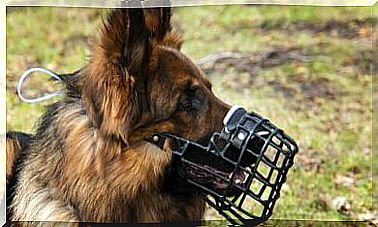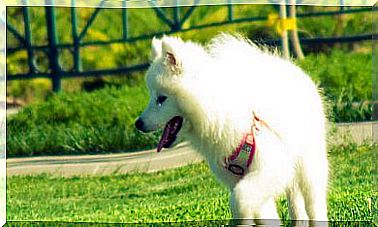Types Of Mange In Puppies: Causes And Symptoms

Scabies encompasses all diseases caused by mites that feed on the skin. In general, this disease is highly contagious and causes very intense itching in patients.
types of scab
There are different classifications of scabies, according to the cause of it. The types of scab are briefly described below:
othodectic mange
Often called ear mange. This type of mange is seen more in cats than in dogs. When found in dogs, they usually come from places like kennels or stores with poor hygiene.
sarcoptic mange
This disease is mainly characterized by being one of the most itchy ones. The responsible mite belongs to the genus Sarcoptes . Although it can affect all species of mammals, it is found most often in dogs.
Cheiletheelosis
The culprit is a parasite belonging to the species Cheyletiella yasguri . This microscopic mite has a characteristic reddish color and can be easily spread among dogs and cats. The advantage is that the treatment is simple and usually the cause is eliminated without major complications.
Demodectic mange or Black mange
The responsible mite is a common inhabitant of dogs’ fur, although it can also be found in cats. The form of transmission is very specific and will be discussed below.
Demodectic Mange: Responsible
This disease is caused by mites belonging to the Demodex genus and, as mentioned above, cases of demodectic mange have been observed in both dogs and cats.
Is it contagious?
This disease is not considered contagious. It is a self-limiting disease present in puppies. Once the pup grows up, it develops immunity to mites and ceases to manifest the symptoms of mange.
Also, it is rare that mites can spread to other domestic animals, as long as the animal is not immunodeficient. This scabies will also not affect humans, while other types of scabies do, such as sarcoptic mange.
Causes
The transmission route is very particular. Mothers transmit this microscopic mite to their puppies after giving birth. Specifically, during the lactation period.
This mite is usually located on the skin of dogs and usually does not cause any problems. However, the disease occurs when the mite begins to multiply uncontrollably.
The increase in the number of mites causes the destruction of the hair roots of dogs. Likewise, it causes severe itching or itching.

Scabies tends to manifest in puppies under 18 months. However, it is also seen in adult dogs, as they often have a weakened immune system.
Symptoms
This disease is usually characterized by intense itching. However, in this type of scabies, there may or may not be itching.
Lesions usually start in areas of fine hair, such as in the eye or mouth region. On the other hand, it is also possible to lose parts of hair on the limbs or on the torso.
The disease can be localized or generalized. If it is widespread, animals lose considerable sized hairs in different areas of the body.
Other notable symptoms are red, scaly skin in hairless regions or the stench they give off. On the other hand, the development of secondary infections causes pain, while desquamation and the appearance of hairless parts are observed as the disease progresses progressively.

Treatment
When the veterinarian performs the proper tests, such as searching for mites, the diagnosis is confirmed. Afterwards, the most appropriate drug for each case will be prescribed.
Depending on whether the extent of the disease was localized or generalized, different actions will be taken:
localized scabies
In this circumstance, the problem resolves itself within a few weeks or months. The puppy develops resistance against the mite and clinical symptoms disappear. Therefore, it does not require treatment.
generalized scabies
On the other hand, if scabies is widespread, you need to act differently. Treatment may vary depending on the type of medication prescribed by the veterinarian.
Medicines can be administered directly to the skin or orally. In the first step, it can be prescribed in the form of an ointment.
The veterinarian will be responsible for deciding the type of treatment. Despite this, it should be mentioned that this therapy involves several months of treatment. It is a long process, because when there are no more mites on the skin, the treatment continues for another month, in a preventive way.
Conclusion
The disease is not contagious. The main ones affected by this disease are puppies, but this condition is also seen in cats.








